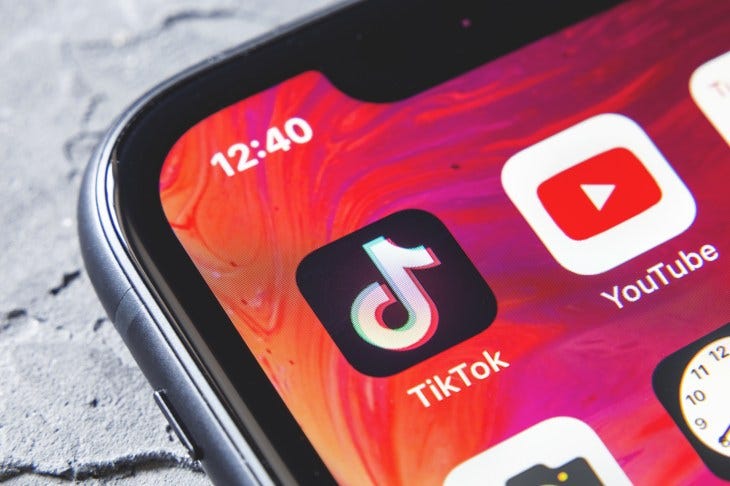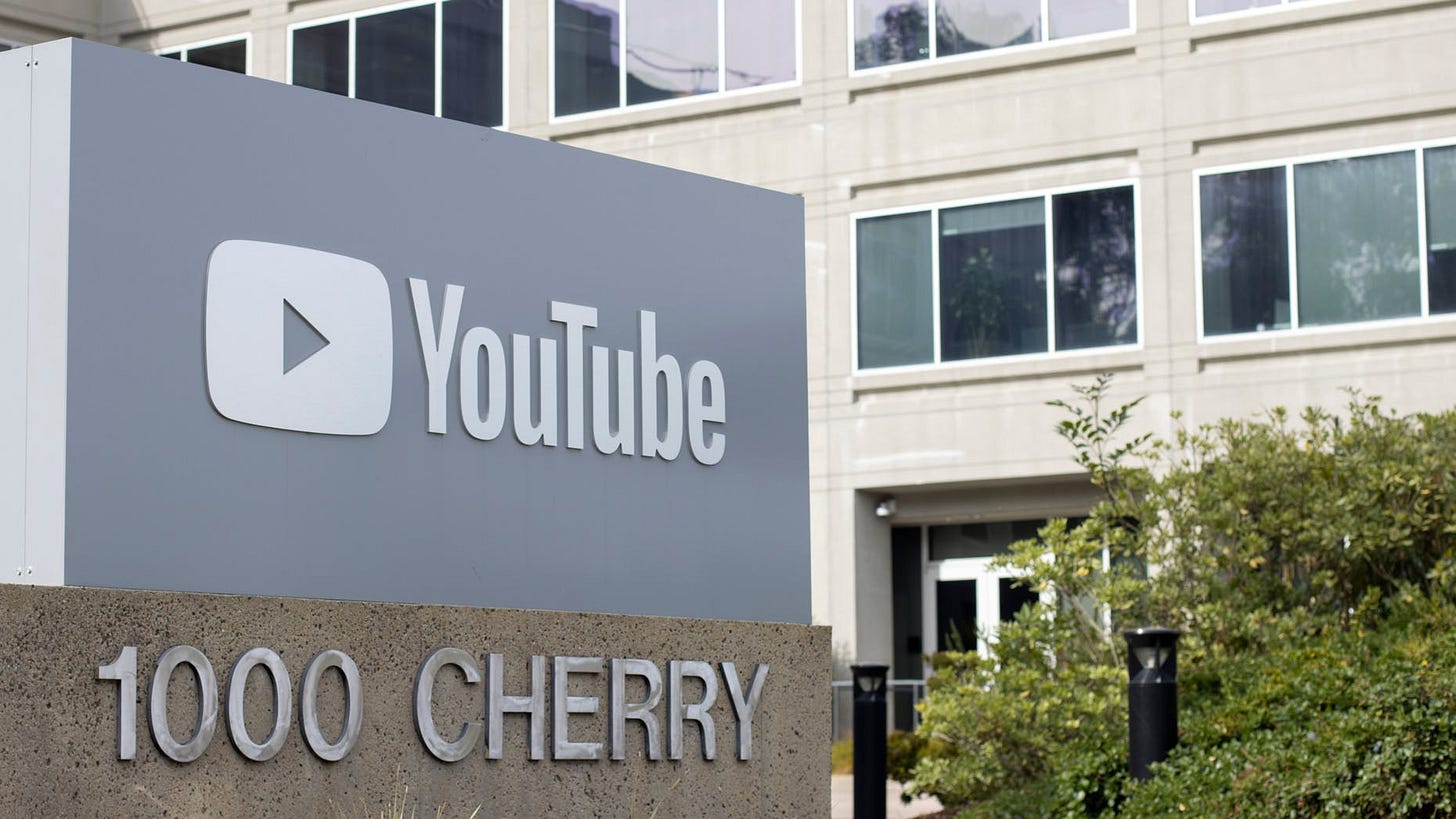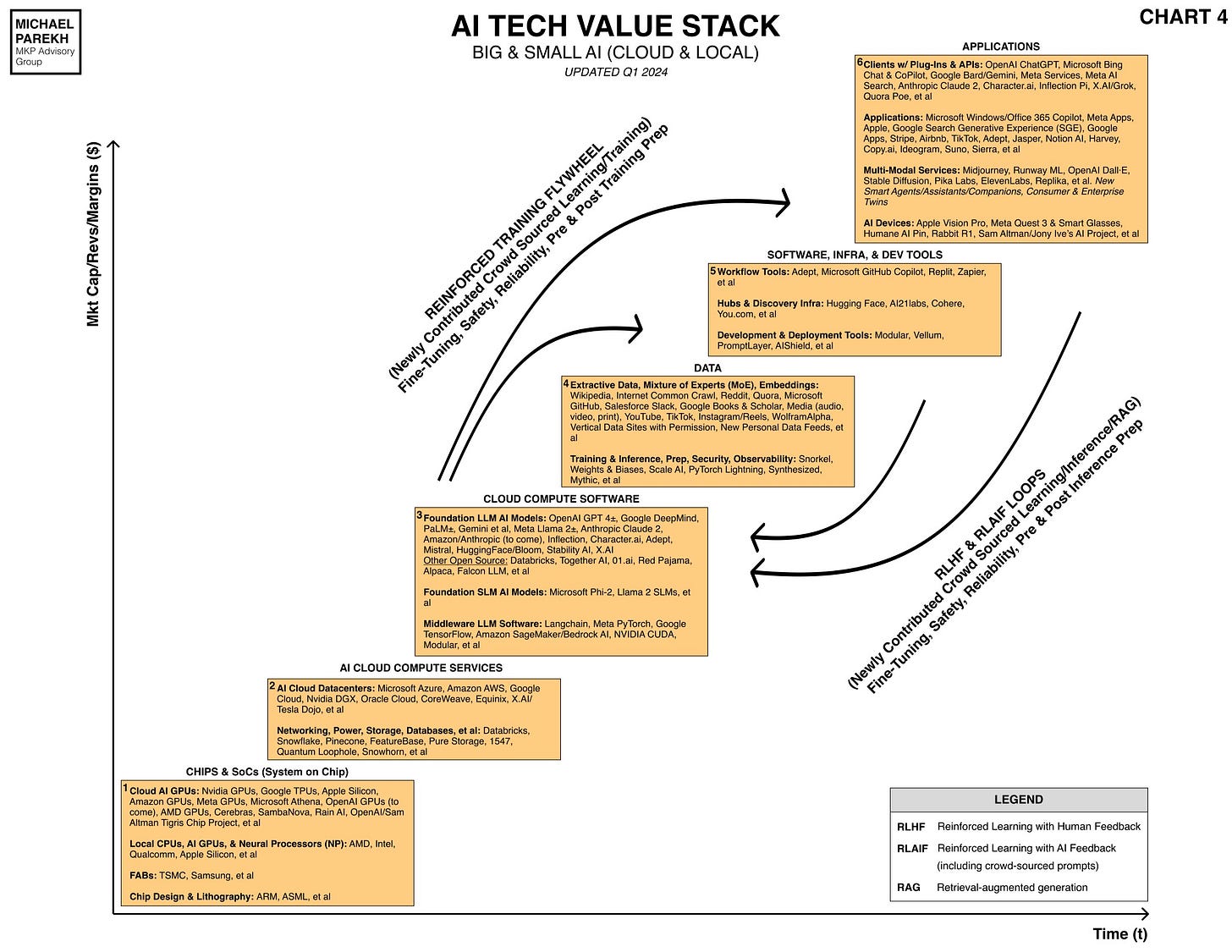Every two years, we get a new glimpse at the social media habits of Americans via the Pew Research Center. It’s latest “Americans’ Social Media Use’ ” offers these highlights:
“YouTube and Facebook are by far the most used online platforms among U.S. adults; TikTok’s user base has grown since 2021.”
So Google and Meta are up front and center, with Bytedance ramping up to a strong number three. And all that is of course a newcomer called OpenAI entered the game.
Given that OpenAI’s ChatGPT broke on the scene little over a year ago, and kicked off the AI Tech Wave, it may be too soon to expect any dramatic AI related changes. But the stage is being set for the next couple of years, as multimodal AI is embedded deeper into the front and back-ends of most social media services.
TechCrunch explains this year’s results:
“The Pew Research Center’s latest report on Americans’ social media habits is out, rounding up social media usage trends among U.S. users over the last two years. While there may be a few small tweaks with each survey, Pew mostly asks the same questions every couple of years, making it possible to track meaningful changes over time.”
“This year’s report surveyed 5,733 U.S. adults, capturing the data from May to September 2023. Most of the findings are intuitive, showing the slow migrations between social platforms, but there are a few interesting moments in the survey worth highlighting.”
“I think one of the really interesting things that we saw this year is the amount of stability that we saw on many of the platforms that we’re studying,” Pew Research Center Associate Director of Research Jeff Gottfried told TechCrunch.”
“While many social media stalwarts mostly hovered near their previous numbers from 2021 — including X, formerly Twitter, surprisingly — TikTok saw relatively explosive growth over the two year timeframe. In 2021, 21% of adults said they “ever use” TikTok, but by last year that proportion was up to 33%. TikTok’s growth among U.S. users didn’t appear to stop Instagram from picking up more adoption as well, and the Meta-owned app went from 40% to 47% in the same time frame.”
Meta has the biggest opportunity to introduce AI driven ‘Smart Agents’ in the coming couple of years, across Instagram, Facebook, and WhatsApp, which has a bigger following overseas. And of course every major big tech ‘Magnificent 7’ company is actively using AI technologies to augment their advertising and monetization efforts going forward across its online media efforts. Meta has made big strides on this front vs TikTok on its short form video product Reels, which is pervasive across Instagram and Facebook.
Google, made clear in its earnings results yesterday, how it was doing well with YouTube overall, and with upcoming AI features in particular.
Both in terms of consumer and creator targeted efforts. Not to mention leveraging AI for advertisers across YouTube and other Google services as well. And ramping up its efforts on YouTube Shorts, which competes head to head with both TikTok and Meta’s Reels products. As the Information highlighted:
“YouTube plans to launch more artificial intelligence tools for creators, its executives said during a conference call. They didn’t provide any details, but I’d look for YouTube to introduce more AI-powered video editing tools, chatbots like Meta’s creator avatars, or AI assistants for creators.
“I’ll reiterate what I have said before: YouTube’s success starts with creators’ success,” Philipp Schindler, Google’s chief business officer, said on a call with analysts. “More creators means more content, which leads to more viewers, and via ads and subscriptions, these viewers fund our creators and drive the eyeballs and engagement our advertisers want.” Schindler said generative AI is “supercharging” video creation capabilities on YouTube, and pointed to new features to translate videos into dozens of other languages or swap in a new backdrop using AI. “There’s more to come,” he said.”
“Executives didn’t have a lot to say about the performance of its TikTok rival YouTube Shorts except to say it “remains a top priority.” Schindler gave the same figures highlighted in the two most recent quarters: Shorts are watched by more than 2 billion logged-in users every month and average daily views of Shorts are still 70 billion, up from 50 billion announced in February 2023.”
“Schindler spoke in broad terms about how successful it’s been getting brands to place ads near short-form video. “Shorts monetization continues to progress nicely,” he said, adding that since introducing revenue sharing for Shorts, total creator earnings have “increased every month. We expect this to continue.”
“Overall, YouTube revenue rose nearly 15.6% to $9.2 billion year-over-year during the fourth quarter, boosted by subscriptions to paid YouTube products.”
As I discussed last July, online Creators are fundamentally changing the media landscape across all these services and more. Goldman Sachs had a report last year highlighting ‘the Creator Economy” growing from $250 billion plus last year to almost half a trillion by 2027.
All these and other AI applications and services across the AI Tech Wave stack above will likely see new habits at scale across audiences both in the US and abroad. Especially as ‘multimodal AI’ services start to find their best ‘product-market-fit’ via the many UI/UX experiments afoot by companies both old and new, and AI big and small. In all types of new AI form factors.
And of course the new Apple Vision Pro will also likely have an impact on how social media products and services are reshaped by the industry as well, fitting the message to the new medium, and shaping new habits.
The Pew reports’ “Americans’ Social Media Use’ report” in a couple of years might start to show the shifts and changes in our habits at scale. Stay tuned.
(NOTE: The discussions here are for information purposes only, and not meant as investment advice at any time. Thanks for joining us here)










